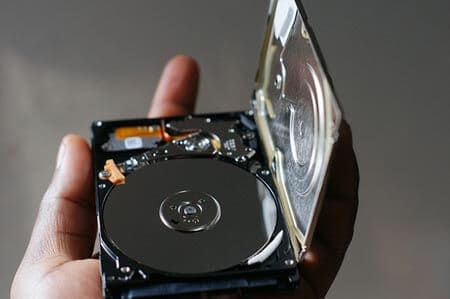Create and store a complete backup image (exact duplicate) of your Windows installation onto another partition. Recently we looked at the benefits of partitioning a hard drive. A key benefit is that you can create and store a complete backup image (an exact clone/duplicate) of your whole Windows installation onto the second partition.
A backup image is a single compressed file that is an exact copy i.e. it contains everything stored in a single partition – in this case the whole of the C: Windows partition – it will include Windows, program files, passwords, user accounts, email and settings etc.
Creating images is one of the worst kept ‘secrets’ of the tech world – it can turn a software crisis into a simple 10 minute fix but most home users remain blissfully unaware of the benefits. It can also be your most powerful last line of defense against the most serious problems with Windows and software programs. If Windows is overrun with viruses or gets corrupted and stops working properly (maybe you can’t log into it or Windows won’t even start) you could pay someone to fix the problems or you may have to reinstall Windows and all your programs from scratch – neither is a welcome solution!
However, if you had a recent image file, you could use it to restore (by overwriting) the whole of the C: Windows partition to exactly as it was at the time you created the file. Even if you can’t log into Windows, you can still use a backup file to restore your Windows C: partition.
In order to keep the size of the file small and reduce the time required, we always recommend that your documents/music etc are kept stored on the second (data) partition, not the main Windows partition but do not forget to back up your documents separately.
What If My Hard Drive Dies? As long as you copied the file to an external device (e.g. a USB hard drive) you can restore it onto a brand new hard drive. For example, we used to create a weekly backup of our test PC onto a second partition which took 10 minutes and we then backed up that image file to an external drive.
When the PC hard drive died we just fitted a new one and restored our last backup file onto it – in just 10 minutes we were up and running again as if nothing had happened :-) If we did not have a backup file it would have taken hours to reinstall Windows, programs, printers etc and configure everything (if we could even remember what was on it!)
How To Create A Backup Image? If you have Windows 7 you are in luck as it includes a basic disk image program:
- Open the ‘Backup and Restore’ center from the Start menu
- Choose the location where you want the file to be stored – we recommend choosing your second (data) partition
- Decide what partitions to include in the file – we recommend only including the Windows partition (usually C: drive)
- The next screen confirms the settings you chose – press ‘Start Backup’ to begin the imaging process which may take 10 – 20 minutes. Do not use your computer whilst the image is being created
- Once complete, we recommend that you copy the file to an external location e.g. a USB hard drive (so it is safe even if your hard drive dies)
Vista Home Premium/Basic and Windows XP do not include an image program so you will need to install one: there are a number of such programs but one of the most popular is Acronis True Image.
Reviews on disk imaging and backup software often vary wildly and Acronis is no different – if you stick to using it only as a means to create and restore disk images it is generally agreed to work very effectively. Where it falls down is in its other ‘features’ such as online backup and one-click backup which are far more temperamental.
Although we have not experienced problems with it, several reviewers found major issues with the other features so our advice is to just use it for disk imaging and not bother with the rest of the ‘features’. It is cheap enough to still be good value as a standalone program.
Alternatively, there is the free disk imaging program Macrium Reflect Free edition which we find works very well but is not as intuitive to use and there is no commercial support for the free version (although the free support forum can be of help with common issues).
Conclusion
Disk imaging is a brilliant way to back up your complete Windows system and settings but should not be relied upon as your only backup (in case the image file becomes corrupted or unable to be restored).
Always backup your important files and documents separately to an external device and treat restoring as a last resort because it will overwrite everything on the partition you restore it to – so if the restore process goes wrong you may end up losing all the files in that partition and have to reinstall Windows from scratch.
Remember that if you restore an image file that is 3 months old you will lose all of the files, documents and programs that were installed on the Windows partition within the last 3 months – it pays to create a new backup frequently e.g. weekly.



This is a very informative article. Keep up the good work.